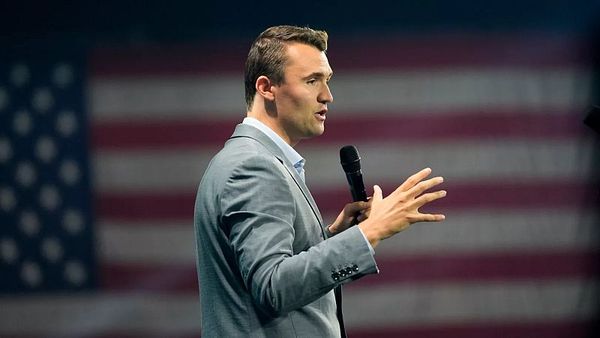Many people don't like to think about death, especially the prospect of a long decline filled with hospital visits and agonizing treatments. But Cicely Saunders viewed end-of-life care as life affirming.
Founder of the modern hospice movement, Saunders (1918-2005) believed that people nearing the end of life deserve dignity and compassion. She challenged the prevailing model in which patients with an incurable illness should wait for painkillers to stop working and writhe in agony before getting the next dose.
Instead, she favored palliative care. It prioritizes pain management and respect for the patient's wishes to cherish the final stage of life rather than undergo aggressive medical interventions.
Choosing hospice care means opting to be kept comfortable rather than seeking life-prolonging medical treatment when terminally ill. Patients usually qualify based on the expectation that they're in the last six months of life. The goal is to enhance quality of life and reduce pain.
Her efforts changed how the terminally ill approach their death. In February, Jimmy Carter entered hospice care. The 98-year-old former president announced that he'd forgo further medical treatment and spend his remaining time at his Georgia home.
Start Out Small Like Cicely Saunders
Born and raised in England, Saunders didn't set out to become a trailblazer. As a nurse and social worker in a hospital, she met dying patients and sought to comfort them.
In 1967, she founded St. Christopher's Hospice in London. She credited a 40-year-old patient, David Tasma, for inspiring her vision: He left her money to establish a facility for end-of-life care.
"She had a vision and she made it happen," said Frank Hill, a London-based chartered accountant who worked at St. Christopher's for 10 years. "When she walked into a room, she had a presence. She took over the space."
Saunders possessed what management consultants call a bias for action. Once she spotted a problem, she sought to solve it.
"If I see a complicated problem, I try to find a practical solution," she told a colleague. Rather than endlessly study the issue, she preferred to do something to address it and go from there.
But Saunders didn't act hastily. Saunders preferred to lay the groundwork for success with diligent preparation and rigorous research.
"She was evidence-based," said Irene Higginson, scientific director at Cicely Saunders International, an education and research organization that Saunders founded in 2002. "She observed that people approaching the end of life were suffering and she validated their stories with data and facts."
As her interest in hospice increased, she realized that she could accomplish more by burnishing her credentials. So at age 33, she enrolled as a medical student.
"She didn't believe people would listen to her," said Higginson, a professor of palliative care at King's College London. "So she spent five years studying to become a doctor."
After qualifying as a doctor, her writings and speeches garnered more attention. She became an articulate and forceful advocate in launching the modern hospice movement.
Saunders: Engage The Head And The Heart
To help demystify the role of hospice, Saunders would tape-record her conversations with patients. She also invited them to create art — drawings and sketches — to illustrate their pain.
"She looked to connect the head and the heart," said Saul Ebema, president of Hospice Chaplaincy, a nonprofit organization in Lombard, Ill.
In her lectures, Saunders showed photos of dying patients with and without hospice care. The contrast was striking.
"The images were mesmerizing," Ebema said. "Those who were left to die alone in a hospital room were in constant pain, isolated and miserable. Then she'd show pictures of the ones in hospice and you could see the difference in quality of life. It inspired audiences."
Saunders: Live By Core Principles
Like a savvy entrepreneur, Saunders understood how to reduce complex concepts into memorable nuggets.
"She was very quotable," Higginson said. "She developed the concept of 'total pain' " to describe the physical, emotional, social and spiritual elements of end-of-life distress.
Saunders established core principles to guide the evolution of hospice, Higginson adds. They included prioritizing the needs of the patient and their family when providing end-of-life care, taking a compassionate approach to relieve suffering and putting the person before the disease.
She was also customer-driven. In the 1960s, it was commonplace for hospitals to allow visitors to see patients only during certain times. But patients craved companionship and support at all hours.
"She did away with visiting hours at St. Christopher's," Higginson said. "Families wanted to come any time they wanted. That's what patients wanted too. As a result, everyone was calmer."
In many hospitals, the standard practice for dying patients involved waiting until they experienced severe pain before administering medicines. Saunders rejected that approach as cruel and enacted a new protocol.
"She educated nurses, doctors and other health professionals that patients should get their pain medicines more regularly," Higginson said. "She found that you could keep the pain more under control that way."
Welcome Wide-Ranging Viewpoints Like Saunders
Saunders anticipated objections that others might have to hospice (such as it's a sign of giving up or hastening death) and addressed them head-on. But she maintained her composure and sought to win over opponents without rancor.
"She had a way of discussing things with people gracefully even when she disagreed," Higginson said.
Visionaries often come across as controlling personalities who wave off differing opinions. Saunders, by contrast, adopted a flexible mindset to achieve her goals.
"She'd listen well, reflect and sometimes change her minds on things," Higginson said. "Initially, she thought hospice should embrace only (patients with) cancer. But over time, she broadened the hospice model to include people with other diseases. And she wanted hospice to be big enough to care for everybody" at home as well as in the hospital.
Hill, who worked with Saunders for a decade, recalled that Saunders welcomed a wide range of viewpoints — and didn't impose her own.
"She was very inclusive and accepting of others," he said, adding that the staff at St. Christopher's was diverse but bonded over a shared mission.
Former staffers still hold an annual gathering to celebrate their work together. "There was such a camaraderie that has lasted to this day," Hill said.
Her receptivity to wide-ranging opinions gave Saunders an edge. It enabled her to overcome resistance and expand her reach.
"She was very collaborative," Ebema said. "She found ways to work with people whom she disagreed with. Because of her experience as a nurse, social worker and medical doctor, she could relate to many audiences."
Stay Busy As You Age
But Saunders didn't like to waste time. Even in her mid-80s, she kept a busy schedule.
Terrence Youk, a documentary filmmaker in Montpelier, Vt., recalls interviewing Saunders in the early 2000s for his film "Pioneers of Hospice."
"She was a very forceful person," he said. "When you met her, she had an indelible effect."
When Saunders arrived for the interview, she was told it would take an hour or more for the camera crew to set up.
"Oh, pull your finger out," she told Youk. It's British slang for get moving.
Cicely Saunders' Keys:
- Founder of the first modern hospice and pioneer in pain management for patients approaching the end of life.
- Overcame: Resistance to her proposed reforms to treat terminally ill patients with compassion and dignity.
- Lesson: "You matter because you are you, and you matter to the end of your life."







